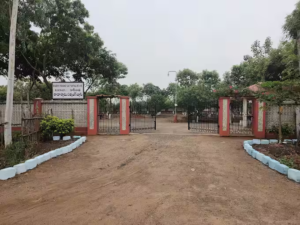Varanasi, also known as Kashi or Banaras, is one of the oldest continuously inhabited cities in the world and the spiritual capital of India. Situated on the banks of the sacred Ganges River, Varanasi is a city that pulsates with life, spirituality, and a unique blend of chaos and tranquility. The city is a melting pot of cultures, traditions, and beliefs, attracting pilgrims, spiritual seekers, and travelers from all corners of the globe. This guide delves into the spiritual essence of Varanasi, exploring its ancient temples, ghats, rituals, and the vibrant cultural tapestry that defines this iconic city.
Varanasi is believed to be the city of Lord Shiva, the Hindu god of destruction and regeneration. The city’s history dates back to at least 3000 years, making it a central figure in Hindu mythology and philosophy. According to legend, Varanasi was founded by Lord Shiva himself, and its spiritual significance is unparalleled. For many Hindus, a pilgrimage to Varanasi and a dip in the Ganges is a once-in-a-lifetime opportunity to cleanse the soul and attain moksha, or liberation from the cycle of birth and death.
One of the most captivating aspects of Varanasi is its ghats, a series of steps leading down to the river where a multitude of activities take place. The ghats are the heart and soul of the city, serving as places of worship, social interaction, and daily rituals. The most famous of these is the Dashashwamedh Ghat, where a spectacular Ganga Aarti ceremony is performed every evening. As the sun sets, priests clad in saffron robes perform a mesmerizing ritual with lamps, incense, and chants, creating an ethereal atmosphere that draws visitors into the spiritual heartbeat of the city.
The ghats also serve as a site for cremation, an integral part of Varanasi’s spiritual landscape. Manikarnika Ghat and Harishchandra Ghat are the two main cremation ghats where the dead are brought by their families to be cremated on the banks of the Ganges. This practice is based on the belief that dying in Varanasi and being cremated here can help the soul attain moksha. While it may seem morbid to some, witnessing these cremation rituals offers a profound insight into the Hindu perspective on life, death, and the afterlife.
Another significant ghat is Assi Ghat, located at the confluence of the Assi and Ganges rivers. This ghat is popular among pilgrims and tourists for its serene atmosphere and spiritual activities. Early morning yoga sessions, meditation practices, and boat rides from Assi Ghat offer a peaceful respite from the hustle and bustle of the city. The ghat also hosts cultural events, including music and dance performances, that showcase the rich artistic heritage of Varanasi.
The city is home to an array of temples, each with its own unique history and spiritual significance. The Kashi Vishwanath Temple, dedicated to Lord Shiva, is the most revered temple in Varanasi and one of the twelve Jyotirlingas, which are sacred abodes of Shiva. The temple’s golden spire and intricate architecture attract devotees and tourists alike, who come to seek blessings and witness the elaborate rituals performed here. Non-Hindus are not allowed inside the temple premises, but the surrounding area, known as the Vishwanath Gali, is a bustling market where visitors can soak in the vibrant atmosphere and shop for religious souvenirs.
Another important temple is the Sankat Mochan Hanuman Temple, dedicated to Lord Hanuman. This temple is believed to be the site where Tulsidas, the author of the Ramcharitmanas, had a vision of Lord Hanuman. Devotees flock to this temple to seek the blessings of Hanuman, the monkey god known for his strength and devotion. The temple is particularly crowded on Tuesdays and Saturdays, which are considered auspicious days for Hanuman worship.
The Durga Temple, also known as the Monkey Temple due to the presence of numerous monkeys in its vicinity, is another prominent religious site. Dedicated to Goddess Durga, the temple is an excellent example of North Indian temple architecture with its multi-tiered spire and ornate carvings. The temple’s vibrant red color and the nearby Durga Kund (pond) make it a picturesque spot for photography and contemplation.
Varanasi is also home to the Tulsi Manas Temple, built in honor of the poet-saint Tulsidas. This temple marks the spot where Tulsidas composed the Ramcharitmanas, an epic retelling of the Ramayana in the local Awadhi dialect. The temple’s walls are adorned with verses from the Ramcharitmanas, and visitors can often hear devotional songs and recitations of the epic being performed here.
The city’s spiritual essence is not confined to Hinduism alone. Varanasi has been a significant center for Buddhism and Jainism as well. Sarnath, located just a few kilometers from Varanasi, is one of the four main pilgrimage sites for Buddhists. It is here that Lord Buddha gave his first sermon after attaining enlightenment, known as the Dharmachakra Pravartana or “Turning of the Wheel of Dharma.” The Dhamek Stupa, built by Emperor Ashoka to commemorate this event, stands as a symbol of Buddhist heritage. The site also includes the Mulagandhakuti Vihara, a modern temple with beautiful murals depicting the life of Buddha, and the Sarnath Archaeological Museum, which houses artifacts and relics from ancient Buddhist monasteries.
Jainism also has deep roots in Varanasi. The city is believed to be the birthplace of Parshvanatha, the 23rd Tirthankara of Jainism. The Parshvanath Jain Temple, located near Bhelupur, is a major pilgrimage site for Jains. The temple’s serene ambiance, intricate carvings, and peaceful surroundings make it a place of contemplation and spiritual reflection for visitors of all faiths.
Exploring the narrow lanes of Varanasi, known as galis, is an adventure in itself. These winding alleys are a maze of ancient buildings, small temples, bustling markets, and hidden shrines. The galis offer a glimpse into the daily lives of the locals and the timeless traditions that have been preserved over centuries. Walking through these lanes, visitors can discover hidden gems like the Nepali Temple, a beautiful pagoda-style temple built by the King of Nepal, and the Alamgir Mosque, a striking example of Mughal architecture.
One cannot experience the spiritual essence of Varanasi without indulging in its unique culinary offerings. The city’s food is a reflection of its diverse cultural heritage, blending flavors from different regions and communities. From street food stalls to traditional eateries, Varanasi offers a gastronomic journey that complements its spiritual exploration. Some must-try dishes include kachori sabzi, a spicy lentil-filled pastry served with a tangy potato curry, and lassi, a refreshing yogurt-based drink that comes in various flavors. Sweets like malaiyo, a frothy milk dessert, and peda, a condensed milk sweet, are local favorites that tantalize the taste buds.
Varanasi is also a hub of classical music and dance, with a rich tradition of performance arts that dates back to ancient times. The city has produced many renowned musicians and dancers who have contributed significantly to Indian classical arts. Attending a classical music concert or a Kathak dance performance in Varanasi is an immersive experience that adds another layer to the city’s spiritual and cultural charm. Venues like the Sankat Mochan Hanuman Temple and the International Music Centre Ashram regularly host cultural events that showcase the talent of local artists and visiting performers.
For those interested in exploring the spiritual practices of Varanasi, there are numerous ashrams and yoga centers that offer meditation sessions, yoga classes, and spiritual retreats. These centers provide a peaceful environment for self-reflection and spiritual growth, allowing visitors to connect with the deeper aspects of their inner selves. Participating in a yoga or meditation retreat in Varanasi can be a transformative experience that complements the city’s spiritual ambiance.
Varanasi’s spiritual essence is also reflected in its festivals, which are celebrated with great fervor and enthusiasm. One of the most significant festivals is Dev Deepawali, also known as the Festival of Lights of the Gods. Celebrated fifteen days after Diwali, Dev Deepawali sees the ghats of Varanasi illuminated with thousands of oil lamps, creating a magical and ethereal atmosphere. The festival is marked by religious rituals, cultural performances, and a grand procession of decorated boats on the Ganges. Another major festival is Mahashivaratri, dedicated to Lord Shiva, which involves night-long vigils, fasting, and elaborate rituals at Shiva temples across the city.
Varanasi’s unique blend of spirituality, history, and culture makes it a destination unlike any other. The city’s ability to harmonize the sacred and the mundane, the ancient and the modern, creates an atmosphere that is both captivating and transformative. Whether you are a pilgrim seeking spiritual solace, a history enthusiast exploring ancient landmarks, or a traveler immersing yourself in the vibrant local culture, Varanasi offers an experience that touches the soul and leaves an indelible mark.
In conclusion, Varanasi is a city that transcends time and space, offering a profound spiritual journey that resonates with the heart and soul. Its ghats, temples, rituals, and cultural heritage create a tapestry of experiences that draw visitors into the depths of its spiritual essence. To truly experience Varanasi is to embrace its chaos and serenity, its traditions and modernity, and its timeless spirituality that continues to inspire and transform all who visit.
SEO Keyword: Spiritual Varanasi, Varanasi temples, Varanasi ghats, Kashi Vishwanath Temple, Ganga Aarti Varanasi, Sarnath Varanasi, Varanasi cultural heritage, Varanasi travel guide









